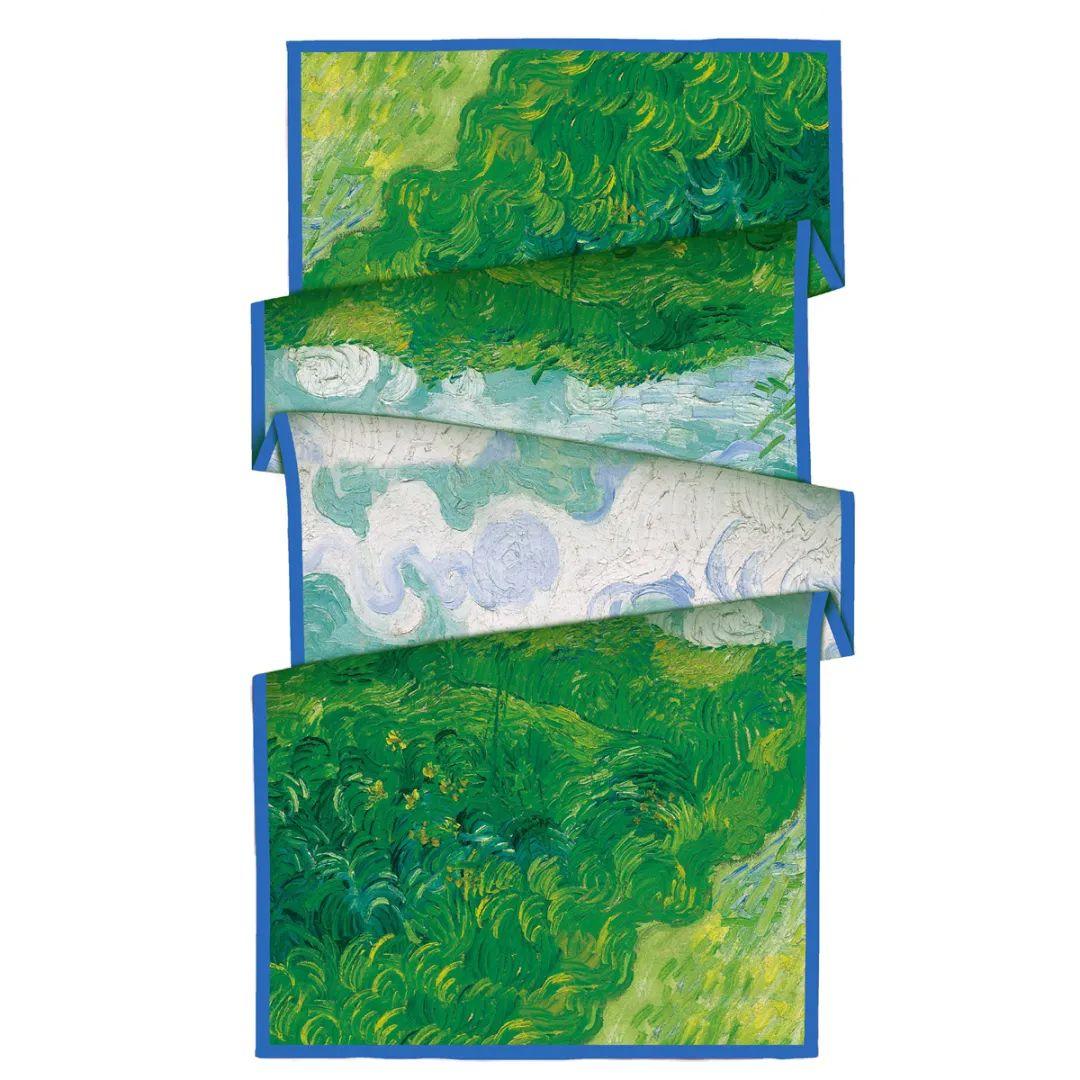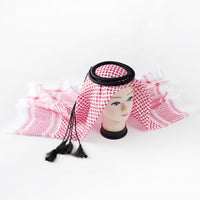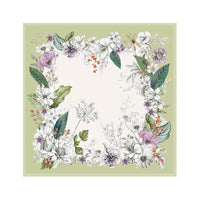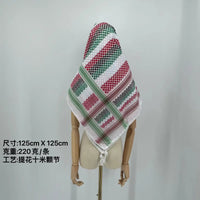The Keffiyeh, a traditional Middle Eastern headdress made of cotton or a cotton-blend fabric, holds profound cultural and political significance. Originating from the Arabian Peninsula, this iconic garment has transcended its initial practical purpose of protection against the harsh desert climate to become a powerful symbol of identity, resistance, and heritage, particularly within Palestinian culture. The Keffiyeh is often distinguished by its distinctive patterns and colors, each carrying its unique symbolism and historical context.
Why Keffiyeh Colors Matter: Understanding the Symbolism in Palestinian Heritage
The colors and patterns of the Keffiyeh are not arbitrary; they convey deep meanings rooted in Palestinian history and culture. Each color symbolizes a different aspect of the Palestinian experience, from resistance and hope to unity and identity. Understanding these colors can enrich one’s appreciation of the Keffiyeh and the stories behind each design.
For instance, the classic black and white Keffiyeh, often recognized globally, is not just a fashion statement; it signifies Palestinian identity and resilience. Similarly, the red Keffiyeh symbolizes revolution and solidarity among Arab nations, reflecting a broader narrative of resistance against oppression. The significance of these colors is crucial for those looking to import or wear these beautiful scarves, as they represent more than aesthetic choices—they are pieces of a larger cultural narrative.
二、The Meaning of the Classic Black and White Keffiyeh
Black and White Keffiyeh: The Traditional Symbol of Palestinian Identity
The black and white Keffiyeh is perhaps the most recognized variant of this traditional headscarf. Its distinct pattern, often with a checkered design, is synonymous with Palestinian identity and is frequently associated with historical figures such as Yasser Arafat. This specific design has become an emblem of resistance and a statement of solidarity against oppression.
The black and white colors reflect the complexity of the Palestinian narrative—black symbolizing the struggles, sorrows, and challenges faced, while white embodies hope and the quest for peace and justice. This powerful dichotomy makes the black and white Keffiyeh a profound representation of the Palestinian spirit and resilience.

Why the Black and White Keffiyeh Became a Global Symbol of Resistance
The black and white Keffiyeh has transcended its origins and has become a global symbol of resistance and support for Palestinian rights. Its adoption by various social and political movements worldwide has further solidified its status as a universal emblem of struggle against oppression, shedding light on issues of injustice, inequality, and human rights violations.
Various cultural and political figures, activists, and celebrities have donned the black and white Keffiyeh, bringing its symbolism into mainstream consciousness. This widespread recognition has transformed the Keffiyeh into a fashion statement that carries with it a message of resistance, making it an enduring icon in both cultural and political contexts.

The History and Meaning Behind the Red Keffiyeh
The red Keffiyeh is rich in symbolism and is often associated with revolution and solidarity among the Arab nations. Historically, the red Keffiyeh has been linked to various political movements and struggles for liberation across the Middle East, representing unity and collective action against colonialism and oppression.
In addition to its historical roots, the red Keffiyeh has gained popularity in contemporary fashion, often seen as a statement of defiance and resistance. The vibrant color captures the spirit of those who have fought for their rights, making it a favorite among activists and those wishing to express their support for the Palestinian cause.
Red Keffiyeh in Palestinian and Arab Movements: A Symbol of Unity and Defiance
The red Keffiyeh has become a unifying symbol for various movements aimed at advocating for change and promoting solidarity among oppressed peoples. It signifies a commitment to social justice and resistance against tyranny. Wearing the red Keffiyeh is often a deliberate choice to convey a message of hope and determination.
The Symbolism of the Blue Keffiyeh: What Does It Stand For?
The blue keffiyeh, while less traditional than its black-and-white counterpart, represents a modern interpretation of cultural identity and heritage. Its adoption in contemporary fashion signifies not only a stylish choice but also a connection to the Palestinian cause. The color blue itself is often associated with trust, loyalty, and wisdom. In the context of the keffiyeh, it embodies the idea of hope and resistance, resonating with youth and activists drawn to its vibrant hue.
Why the Blue Keffiyeh Is Gaining Popularity in Fashion and Activism
In recent years, the blue keffiyeh has seen a surge in popularity, not just as a fashion accessory but also as a statement of political allegiance. This rise can be attributed to several factors:
- Fashion Trends: The blue keffiyeh has been embraced by designers and fashion influencers, becoming a staple in streetwear collections. Its versatile design allows it to be paired with various outfits, making it appealing to a broad audience. Fashion magazines and platforms, such as , have noted this trend, highlighting how traditional garments are being reimagined in contemporary styles.
- Activism and Awareness: The keffiyeh has transitioned from purely a cultural garment to a powerful symbol in global activism. The blue keffiyeh has been adopted by activists advocating for Palestinian rights, where its unique color helps differentiate their message while still tying back to the original symbolism of resistance. Campaigns and protests frequently feature the blue keffiyeh, allowing wearers to visually express solidarity with ongoing struggles for justice.
- Cultural Exchange: The globalization of fashion has led to more individuals embracing the keffiyeh as a symbol of cultural appreciation and solidarity. Social media platforms, such as , have played a significant role in promoting the blue keffiyeh, with hashtags like #BlueKeffiyeh trending among influencers who wish to showcase their support for Palestinian culture.

五、The Green Keffiyeh: A Color of Hope and Liberation
Green Keffiyeh Meaning: Connection to Resistance and Palestinian Nationalism
The green keffiyeh is often viewed as a symbol of hope, liberation, and the Palestinian struggle for self-determination. Green is a color deeply rooted in Palestinian nationalism, often associated with the land’s fertility and the aspirations of the Palestinian people.
The green keffiyeh has historical significance, frequently worn by leaders and activists who advocate for Palestinian rights. Its vibrant color symbolizes resilience and the ongoing quest for freedom, making it an important element in protests and cultural celebrations. According to a report by , the green keffiyeh has been prominently featured during major political events, reinforcing its association with Palestinian identity and resistance.
The Green Keffiyeh in Political Movements: A Sign of Hope for Palestinian Freedom
In the realm of political movements, the green keffiyeh stands as a beacon of hope for many Palestinians. Its presence in demonstrations and rallies serves as a powerful reminder of the community's aspirations for freedom and self-governance.
The green keffiyeh has also gained recognition beyond Palestinian borders, symbolizing broader struggles against oppression and injustice. Activists globally have adopted the green keffiyeh as a sign of solidarity with the Palestinian cause, fostering a sense of unity among diverse movements.

The White Keffiyeh: A Less Common Color with Deep Cultural Meaning
The white keffiyeh is often perceived as a symbol of purity, peace, and reconciliation. Unlike the more commonly worn colors, the white keffiyeh carries a nuanced meaning that resonates particularly in moments of truce and dialogue.
This color holds significance in various cultural contexts, reflecting a desire for harmony and understanding amid conflict. The adoption of the white keffiyeh is sometimes seen in ceremonies and events that promote peace, serving as a visual representation of the hope for resolutions to longstanding disputes.
When and Why People Choose to Wear the White Keffiyeh
While less frequently seen in day-to-day wear, the white keffiyeh is donned during specific occasions that emphasize its message of peace. Events focusing on dialogue or reconciliation often see participants wearing this color to symbolize their commitment to finding common ground.

Yellow Keffiyeh: A Color of Peace, Prosperity, and Resilience
The Yellow Keffiyeh is a vibrant addition to the traditional palette of this iconic headscarf. Although it is less common than its black and white or red counterparts, the yellow variant carries significant meanings that resonate deeply within various cultural and social contexts. In many cultures, the color yellow is often associated with peace, prosperity, and resilience.
Cultural Interpretations of Yellow
- Peace: Yellow often symbolizes a hopeful future and reconciliation. In conflict-ridden areas, wearing a yellow keffiyeh can signify a desire for peace and dialogue, rather than confrontation.
- Prosperity: In many traditions, yellow represents wealth and abundance. This connection to prosperity can be seen in its use during festivals or significant life events, where wearing a yellow keffiyeh can signify joy and celebration.
- Resilience: The bright hue of yellow can also symbolize strength and durability. People wear it as a reminder of their inner strength and the resilience needed to overcome challenges, particularly in times of political or social strife.
Where the Yellow Keffiyeh Is Seen: A Color for Different Occasions
The Yellow Keffiyeh is often worn in a variety of contexts, each reflecting its unique symbolism:
| Occasion | Context | Symbolism |
|---|---|---|
| Cultural Festivals | Worn during celebrations and traditional events. | Signifies joy and community togetherness. |
| Political Demonstrations | Used in protests advocating for peace or rights. | Represents a call for dialogue and unity. |
| Everyday Fashion | Incorporated into casual wear. | Enhances personal style while conveying messages of hope and resilience. |
| Artistic Expressions | Featured in artworks and performances. | Reflects cultural heritage and the desire for a prosperous future. |
In recent years, the yellow keffiyeh has gained popularity not only in traditional contexts but also in modern fashion. Designers are creatively integrating this color into contemporary styles, making it a statement piece that transcends its original cultural significance. It resonates with a younger audience who are looking for ways to express their identity while also embracing traditional motifs.

八、The Future of Keffiyeh Colors: Evolving Symbolism in the Modern World
Will Keffiyeh Colors Continue to Hold Political and Cultural Meaning?
As we move further into the 21st century, the Keffiyeh—including its various colors—continues to be a powerful symbol of identity and resistance. However, the meanings behind the colors are evolving. In addition to their traditional connotations, they are being reinterpreted in light of contemporary global issues.
Globalization and Cultural Exchange
With the rise of globalization, the keffiyeh is being embraced by diverse cultures worldwide. The yellow keffiyeh, for example, is increasingly seen in international fashion markets, raising questions about cultural appropriation versus appreciation. This shift suggests that while the keffiyeh retains its roots, its meanings may expand and adapt in new contexts.
The Changing Role of Keffiyeh Colors in Global Fashion and Activism
The increasing visibility of the keffiyeh in global fashion indicates a trend where fashion and activism intersect. Designers are recognizing the keffiyeh as not only a cultural artifact but also as a platform for social commentary.







